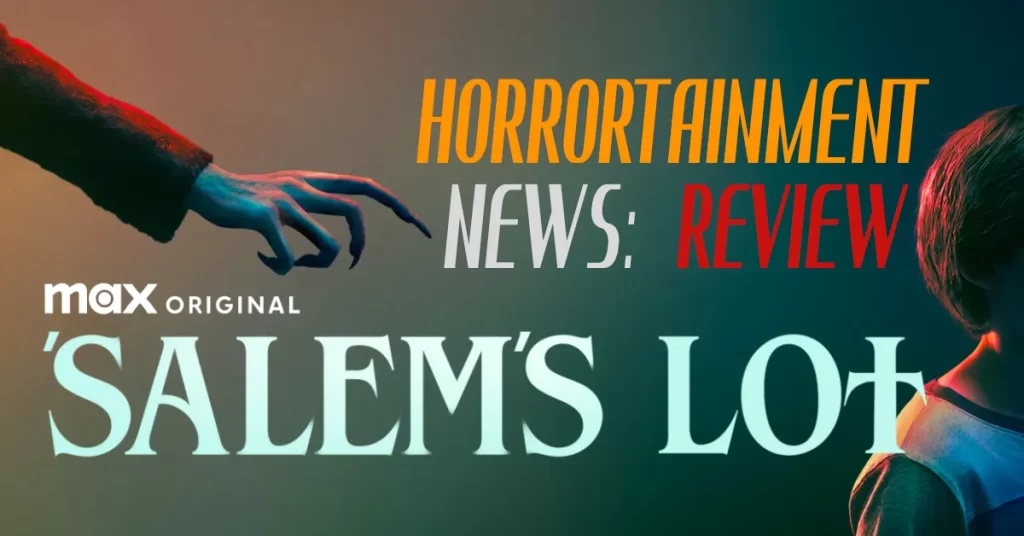In a landscape saturated with horror adaptations, Salem’s Lot (2024) emerges as a fresh yet uneven interpretation of Stephen King’s classic novel. Directed by Gary Dauberman, this latest incarnation of the vampire tale set in the fictional town of Jerusalem’s Lot ambitiously aims to blend terror and emotional depth. While the film delivers some genuinely chilling moments and strong performances, it ultimately stumbles due to pacing issues, character development, and a failure to fully realize the source material’s richness.
Plot Overview
At its core, Salem’s Lot follows Ben Mears (played by Lewis Pullman), an author returning to his hometown to confront his childhood demons, only to discover that the town has been infiltrated by a sinister vampire, Kurt Barlow (Alexander Ward). The narrative touches on themes of isolation, the nature of evil, and the fight against insidious forces—both literal and metaphorical. The film’s cinematography captures the haunting essence of small-town life, effectively establishing an eerie atmosphere that permeates the storyline.
Strengths of the Film
One of the film’s notable strengths is its commitment to horror. Dauberman adeptly builds tension with a series of well-executed scares and atmospheric sequences that pay homage to the chilling essence of King’s writing.
Character Development Issues
However, this relentless pace often comes at the expense of character development. Characters learn critical information about the vampire threat at an alarming rate, seemingly without adequate exposition or justification. For example, scenes intended to illustrate the depth of the characters’ relationships are truncated or glossed over, leading to a disconnection between the audience and the characters. As viewers, we find ourselves asking how they could adapt and react so swiftly when the horror escalates, ultimately detracting from the overall immersion.
Missed Opportunities from the Source Material
Moreover, the adaptation misses several key opportunities to delve deeper into the emotional and psychological layers present in King’s novel. The book intricately explores the backstories of its characters, making their fears and struggles resonate with readers. In the film, many of these complexities are either reduced to surface-level sketches or completely omitted, resulting in a narrative that feels rushed. For instance, the friendship between Ben and Mark Petrie, the young boy who becomes an unlikely ally in the battle against Barlow, lacks the emotional weight that it should carry. This relationship is pivotal in the book, showcasing the innocence of youth contrasted against the dark forces they face. The film hints at this connection but fails to flesh it out meaningfully, leaving viewers yearning for a more nuanced exploration of their bond.
Pacing and Narrative Structure
More on the film’s pacing, which feels erratic at times: There are moments of genuine tension that are quickly followed by scenes that resolve conflicts too conveniently or abruptly. The narrative shifts from high-stakes drama to momentary lulls, undermining the film’s suspense. Such pacing issues highlight the necessity of a longer director’s cut that could allow for deeper character arcs, more nuanced interactions, and a more gradual unfolding of the horror elements. A longer runtime would provide the breathing space needed for the story to unfold organically, allowing viewers to invest in the characters’ journeys before the chaos ensues.
The Mini-Series Format Advantage
In this regard, the mini-series format could have been a far more effective medium for Salem’s Lot. An 8-hour mini-series would allow for a comprehensive exploration of the source material, affording each character the necessary development and backstory to create a compelling narrative tapestry. The intricacies of King’s novel, from the haunting memories of Ben’s childhood to the gradual corruption of the town, would benefit significantly from this expanded format. Not only could the pacing be adjusted to build tension more organically, but the richness of the characters and their motivations could be explored in greater depth.
Conclusion
In conclusion, while Salem’s Lot (2024) has its merits—particularly in its atmospheric horror and effective moments of suspense—it ultimately falls short of fully realizing the potential of its source material. The film’s rushed character development and pacing issues prevent it from achieving the emotional resonance and depth that King’s novel so deftly provides. A longer director’s cut or, better yet, an 8-hour mini-series could transform this adaptation into a truly memorable exploration of terror, evoking both fear and empathy. As it stands, Salem’s Lot remains an intriguing that’s absolutely worth seeing, despite its shortcomings.
